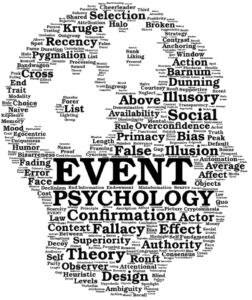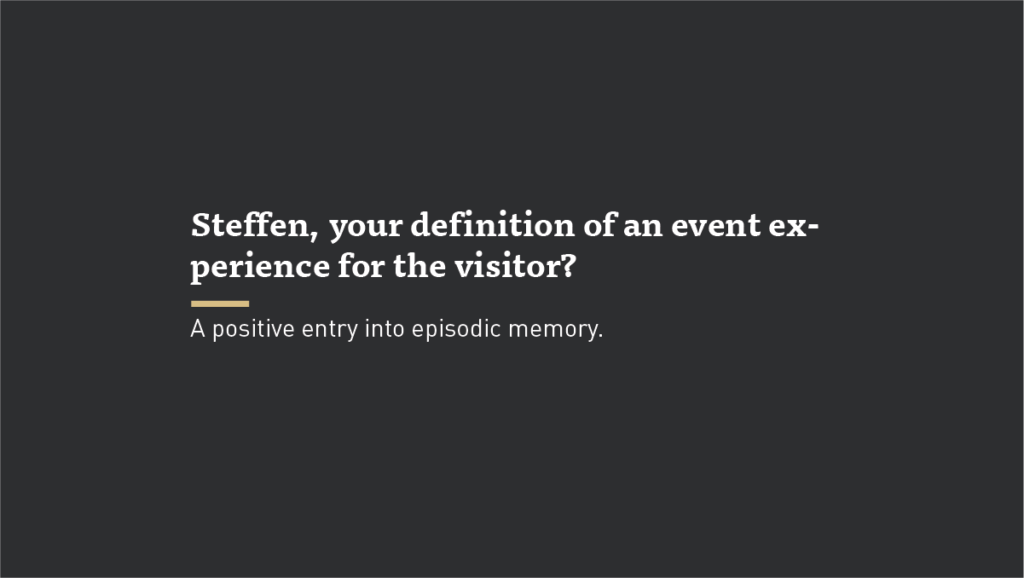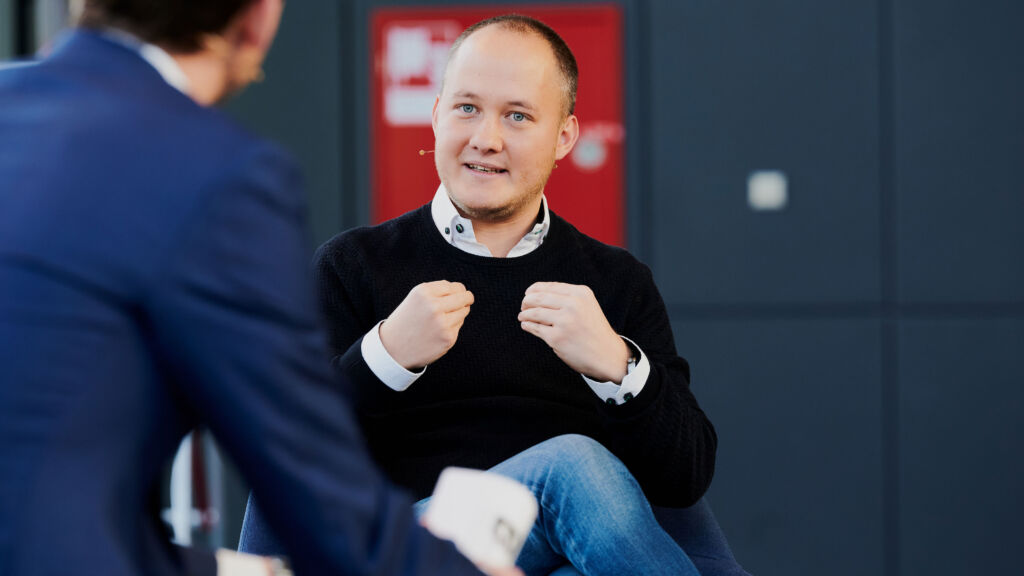Joy, enthusiasm or goosebumps – these are all feelings that an event can evoke. But how? We interviewed Steffen Ronft, a specialist in event psychology, as part of our four-part series “Event experience: Manipulation of emotions?” and he gives us an in-depth insight into the soul of an event experience.
Steffen Ronft: people can get goosebumps in two ways. Firstly, when expectations are exceeded and event participants are positively surprised by events. Secondly, people can be inspired by a group experience. Ultimately, we all need a sense of belonging. This can be triggered by large crowds in a football stadium or at a concert. People look around, and so-called mirror neurons cause them to understand that everyone is feeling the same emotions. But this kind of “aha” moment can also be created in small groups of 4-5 people. On New Year’s Eve when the countdown begins, or when a crucial goal is scored in the World Cup, you feel the euphoria – even if you are perhaps only watching the game in front of the TV.
These are unforgettable moments that always trigger goosebumps.
The same applies to negative emotional moments. Everyone knows where they were when the 9/11 terrorist attacks took place in NYC.

Quelle: Ronft
Neurological research has shown that the limbic system is responsible for emotions. This region of the brain produces countless hormones, which send us signals. We experience these as emotions. The sense of smell, for example, is directly linked to the brain and the emotional centre, which means that everyone feels a direct perception. Humans have certain inherent senses. When we smell a fire, this signals danger, we start to sweat, we develop a heightened awareness of sounds, and we get a kick of adrenaline.
How can you use this knowledge for events?
Various techniques can be used to trigger certain emotions in the target group. First, the host will need to define what kind of impression is to be made on the group. For certain emotions, people are brought into contact with multi-sensory perceptions: the five senses. The information coming in through the five senses must be congruent. A dessert buffet is a great example: if it still smells like the cheese pizza from lunch, hardly anyone will tuck in. Visual and olfactory perception should match. However, techniques such as lighting can be used to play with someone’s sense of smell or temperature, and décor can also play a role in influencing people’s sensory perception.
Hand on heart: that sounds very much like manipulation.
It’s true that certain perceptions in people can easily be manipulated from the outside. For example, people feel comfortable at a certain warm temperature: oxytocin levels rise – just as they do when this “love hormone” is instrumental in mother-child bonding. In theory, this hormone could even be produced synthetically and administered via a spray. People absorb it via the nasal mucosa, and the result would be a greater sense of familiarity and comfort in their surroundings.
The key thing is the target group: the people selected to attend have made time for the event. In other words, they are already looking forward to the occasion. If you were to bring people together randomly, the response to an event might be very different. To create an emotional experience for guests, their expectations must be exceeded. This process begins as soon as they get the invitation and during pre-event communication – but there should always be room for more, in other words, scope for an element of surprise.
The information coming via the five senses must be congruent.
How do I create a lasting event experience?
Several regions of the brain are responsible for lasting emotions. The thalamus decides what comes into consciousness. As an organiser, information must be provided that is sufficiently relevant to stimulate conscious awareness. The hippocampus, on the other hand, decides how relevant the “conscious” event is and submits it to long-term or short-term memory.
Episodic memory plays an important role for the event industry. This is where sensory perceptual experiences are stored. It also governs our retelling of most experiences, along with the emotions.
That can be put quite simply: the context defines a successful event experience. In a workshop, participants should be able concentrate on working together and learning new things through interest and curiosity. A hard rock concert, on the other hand, requires more adrenaline and an immersive experience that is a break from everyday life.
There are no clear “don’t do it” rules. People will be disappointed if they expected something completely different from the experience offered. The problem often lies in communication, where incongruous information has been provided to the guest. A consistent perception of the goals and content of the event is also an important part of the event experience before and after. Similarly, there can be serious disappointment if minimum expectations are not met. Once the event is over, it may be seen as a waste of time.


Quelle: Wachenfeld
Steffen is a university lecturer and expert in event psychology, who has been conducting research in perception psychology and trade fair, congress and event management for over ten years. He is particularly interested in how events can be optimised from a psychological point of view. Steffen is considered a pioneer in the interdisciplinary field of event psychology and also represents this perspective internationally as a jury member at the EVENTEX Awards. In addition, he is the editor of the standard reference text “Eventpsychologie – Veranstaltungen wirksam optimieren” and works as a consultant and speaker. Steffen is also a guest on various MICE industry podcasts such as Grenzenloses Eventdesign and Events im Wandel.
